
Product test
A sick Wi-Fi upgrade for my flat: testing the ROG gaming router
by Martin Jud

My apartment has recently turned into an experimental laboratory for routers. After a ROG gaming router brought my previous powerline WiFi solution to its knees in my last WiFi test, it's Synology's turn now. Might there be a new winner?
At the beginning of September, I gave my apartment a massive WiFi upgrade by switching from a powerline WiFi solution to the GT-AC2900 ROG router. The result was a little surprising: with one internal and three external antennas, the router resulted in a 5.6-fold increase in performance compared to the previous WiFi solution. This corresponds to an average of 329.4 Mbps with a ping of 3 ms.
Apart from the performance of the router, I was surprised by how many comments and mails followed my last article. When I asked which products you’d like to test, half the router range was suggested. And your wishes are my command; the next product I’ll test will be the one that is asked about most. Next up? Synology.
Synology's RT2600ac has four external antennas and promises a maximum transmission rate of 1733 Mbps in the 5 GHz range and 800 Mbps in the 2.4 GHz range.
These are the specs that Synology provides:
My 120 m² maisonette apartment is my test laboratory. I install the Synology router in the same place as the previous router I tested, the ROG. Following my last test, I’m expecting coverage problems to be seen in the office, if anywhere.
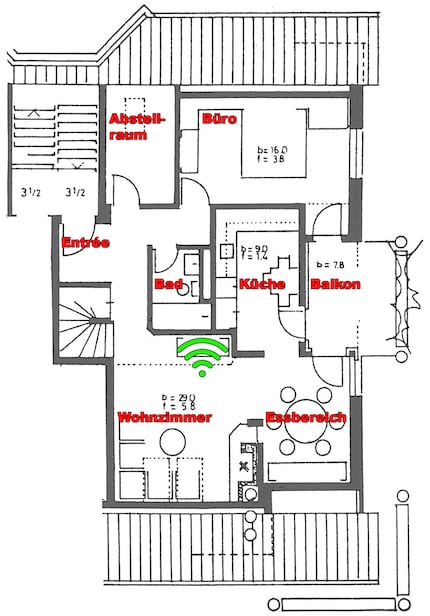
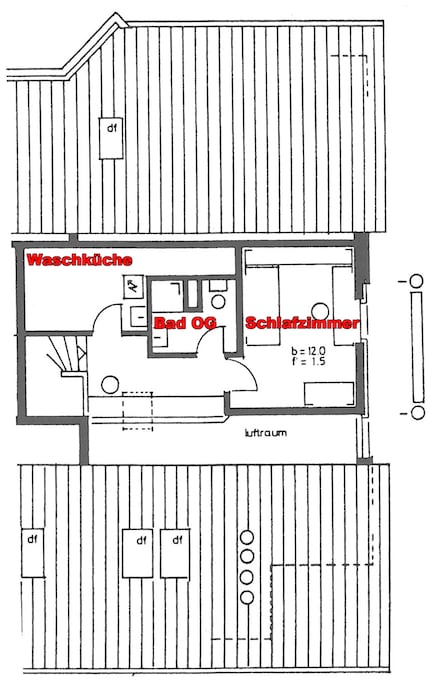
It takes no time at all to unpack the router and set it up: screw on four antennas, plug in the cable and switch it on. After this, I connect my smartphone with the SSID «Synology Router», enter the password «synology» and type http://router.synology.com into the browser.
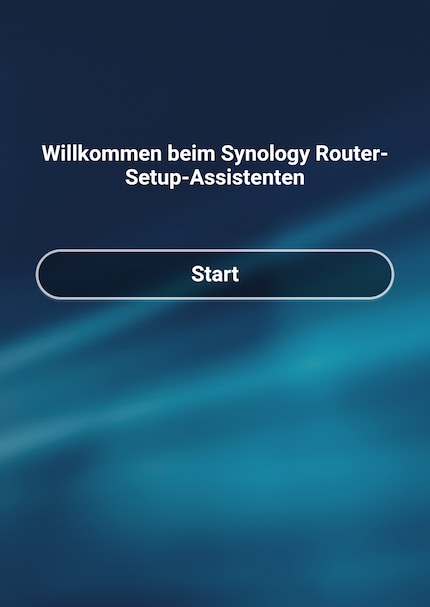
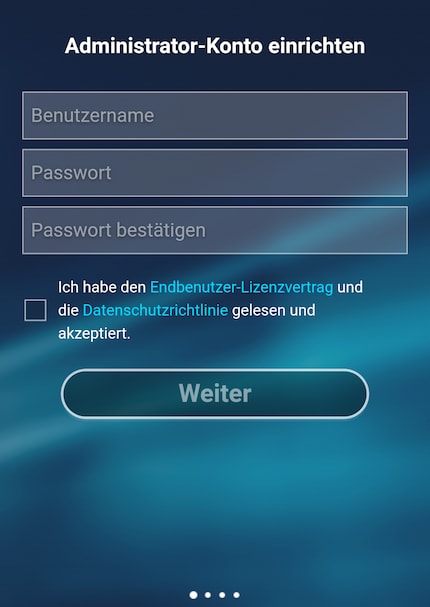
The setup wizard of the router welcomes me. I tap Start and create an administrator account.

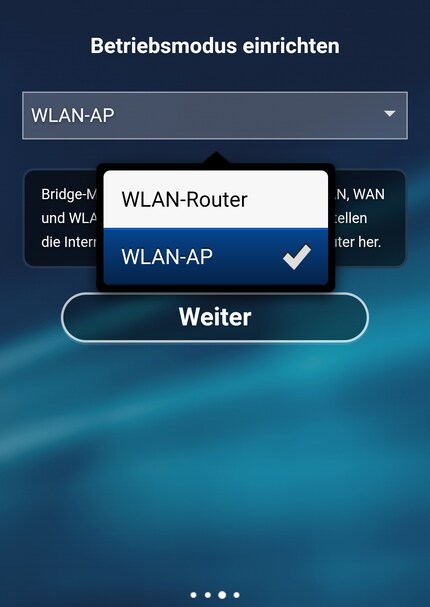
I define the desired SSID and a password. Router or access point are available as user modes. As my cable modem will continue to take over the assignment of the IP address and port forwarding for now, I opt to operate the router as an access point.

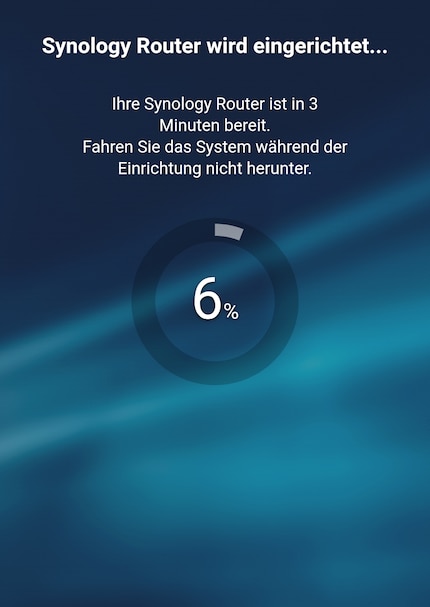
Now all that’s left is to configure the Internet connection and wait two to three minutes until the device is ready for use.
Equipped with a notebook and the software «LAN Speed Test», I start measuring my Wi-Fi. I upload a 1 GB file to my NAS (in German), which is located in the living room, up and down three times per measuring location. To determine the latency, I ping my NAS using the DOS console.
| Location | Speed | Ping |
|---|---|---|
| Entrance hall | 484.1 Mbps | 4 ms |
| Living room | 551.2 Mbps | 2 ms |
| Dining room | 548.0 Mbps | 2 ms |
| Kitchen | 434.4 Mbps | 3 ms |
| Balcony | 391.2 Mbps | 3 ms |
| Broom closet | 312.8 Mbps | 6 ms |
| Bathroom | 549.3 Mbps | 4 ms |
| Office | 176.8 Mbps | 7 ms |
| Washing room | 242.4 Mbps | 4 ms |
| Upstairs bathroom | 297.6 Mbps | 6 ms |
| Bedroom | 226.4 Mbps | 6 ms |
| Ø | 383.1 Mbps | 4 ms |
This corresponds to an average of 383.1 Mbps with a ping of 4 ms.
If I compare the Synology router to the WiFi solutions I tested so far, the Synology router shows the highest average data processing performance.
| Location | Synology RT2600ac | ROG Rapture GT-AC2900 | Devolo Magic 2 Wifi |
|---|---|---|---|
| Entrance hall | 484.1 Mbps, 4 ms | 283.0 Mbps, 3 ms | 31.9 Mbps, 13 ms |
| Living room | 551.2 Mbps, 2 ms | 553.6 Mbps, 2 ms | 76.5 Mbps, 10 ms |
| Dining room | 548.0 Mbps, 2 ms | 520.0 Mbps, 2 ms | 65.5 Mbps, 12 ms |
| Kitchen | 434.4 Mbps, 3 ms | 388.0 Mbps, 2 ms | 75.0 Mbps, 11 ms |
| Balcony | 391.2 Mbps, 3 ms | 284.0 Mbps, 3 ms | 24.9 Mbps, 15 ms |
| Broom closet | 312.8 Mbps, 6 ms | 373.6 Mbps, 2 ms | 78.6 Mbps, 9 ms |
| Bathroom | 549.3 Mbps, 4 ms | 523.2 Mbps, 2 ms | 88.4 Mbps, 8 ms |
| Office | 176.8 Mbps, 7 ms | 56.9 Mbps, 5 ms | 91.3 Mbps, 2 ms |
| Washing room | 242.4 Mbps, 4 ms | 193.0 Mbps, 4 ms | 66.8 Mbps, 12 ms |
| Upstairs bathroom | 297.6 Mbps, 6 ms | 269.0 Mbps, 3 ms | 71.4 Mbps, 10 ms |
| Bedroom | 226.4 Mbps, 6 ms | 179.0 Mbps, 4 ms | 58.7 Mbps, 7 ms |
| Average | 383.1 Mbps, 4 ms | 329.4 Mbps, 3 ms | 66.3 Mbps, 10 ms |
Just as with the ROG router, the Synology router also struggles with WiFi coverage in the office. But I still measured 176.8 Mbps, whereas the ROG only showed 56.9 Mbps. However, the ROG router performed better when it came to latency and should therefore be slightly better suited for gamers. As far as the Wifi of the Powerline is concerned, it can't really be compared to routers that feature external antennas. Powerline offers low throughput in many power grids but reaches every room and shows almost no latency when using the RJ45 cable.
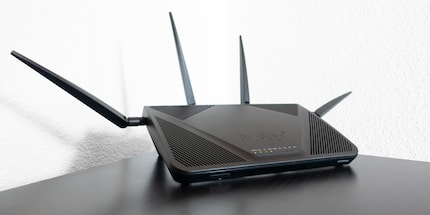
Well done Synology, you've managed to beat the ROG router in terms of data processing performance. With 383.1 Mbps compared to 329.4 Mbps, Synology has secured the first place on the podium. For now. This router also comes at a good price. If Synology manages to catch up on a millisecond of latency, I might even be tempted to switch from the ROG router to this one.
What this router lacks compared to the ROG gaming router is the GeForce Now Recommended Router support and the LED light show. It could also do with two more user modes; Range Extender and Media Bridge.
If you're looking for strong WiFi without additional gaming features, Synology is the right choice. If you don't need a new router right away, I’d recommend waiting for more of my router reviews. I can’t wait to see which router will be the next to give my home a speed boost.
I find my muse in everything. When I don’t, I draw inspiration from daydreaming. After all, if you dream, you don’t sleep through life.